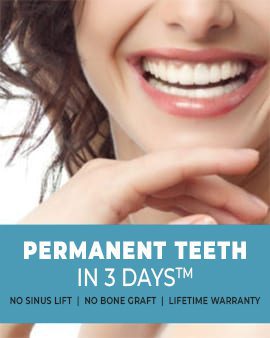Sep 28, 2023
White spots are a common type of enamel discoloration that can be noticed on teeth. The tooth appears to have certain areas that are beautiful, opaque white tint that stands out from the rest of the tooth. Although your first impression may be that having white teeth makes you seem good, you should realize that this is not the case in this instance. If teeth have white spots on them, they may appear damaged and discolored.
What Causes the White Spots?
White spots on the teeth can have a number of causes, some of which are listed below. In fact, it’s a topic that, in our experience, comes up very regularly. Potential causes of spots on teeth include some of the following:
- Either abnormal development or genetics.
- A sign of a nutrient shortage or an unbalanced mineral content.
- Some children develop the disorder known as fluorosis as a result of either their bones absorbing too much fluoride or them consuming too much fluoride as a young child.
- Being affected by celiac disease is one of its effects. Due to their inability to consume gluten, those who are gluten intolerant may not be able to adequately absorb all of the essential nutrients found in their meals.
- The use of specific medicines has been connected to tooth discoloration in general as well as white spots on teeth.
- One of the dental issues brought on by smoking while pregnant is enamel hypoplasia, a condition that causes white spots on the teeth. There may be more causes for dental issues.
- A person’s dental enamel begins to erode when they consume a lot of sugary foods, which causes decalcification (a condition in which the teeth get weaker) and the appearance of white spots on the teeth.
- One of the most frequent causes of white spots is plaque buildup around brackets, wires, and other orthodontic appliances, and wearing braces is one of the most frequent causes of white spots.
Optional White Spot Treatment
Until recently, there were only two distinct ways to cure white spots. To remineralize the teeth, the first step involved using fluoride products on them. This strategy typically failed because it produces negligible, if any, outcomes.
The second possible treatment for white spots is to treat the area as if it were a cavity. Specifically, the area would be properly cleaned before being filled with a composite material that matched the shade of the tooth. These fillings eventually need to be changed since they degrade over time.
Veneers are a different treatment option that has been used in the past to address white spots. However, this cure is not advised for anyone under the age of 40 due to its high cost. Children and teenagers are the group most likely to have white spots on their teeth, despite this.
If the white spots on your teeth are tiny enough, our dentist might decide against treating them and instead keep a close eye on them in case they eventually turn into cavities.
Teeth Whitening to Address White Spots
Old-fashioned techniques are no longer the only options for treating tooth white spots. Thanks to a ground-breaking new technique, we can now remove white spots without any numbing, drilling, or filling. Instead than relying on ineffective fixes or ones that necessitate permanent dental work, we may exercise more caution. The healthy tooth structure would still be preserved while the white patches could be removed.
With this cutting-edge procedure, the white spot, also known as a lesion, is removed by opening the pores that are dispersed uniformly across the surface of your teeth with a special gel. A particular medication is applied to the skin lesion once the white spot has dried. As a result, the formula enters the tooth’s pores and stops the growth of the white spots. Any extra material is then removed, and the tooth is then repaired by being exposed to a certain light.
Treatment only takes a short amount of time—about 15 minutes for each tooth. The result is a tooth surface that looks even and aesthetically pleasant.
Avoiding Reappearance of White Spots
Dental care that is prevented is always going to be the most successful. To lower your risk of acquiring white spots on your teeth, you should practice good dental hygiene every day in addition to live a healthy lifestyle. Give your teeth a thorough brushing and flossing at least twice a day. After every meal, you should brush your teeth if you have braces. Make sure to carefully and thoroughly clean the area surrounding the brackets and wires. Additionally, you ought to make an effort to reduce the amount of sugary foods and drinks you consume, such those in sodas and energy drinks. The best beverage choice is by far water.
Smoking should be avoided if you are expecting a child since it raises the possibility of future oral health issues.
As your child brushes their teeth, keep an eye on them. They shouldn’t use too much toothpaste, or you’ll have a problem. For newborns and young children, only a very tiny amount of toothpaste, around the size of a grain of rice, should be applied. For older youngsters, a portion the size of a pea is ideal.
The Elimination of White Spots
You should schedule a consultation with Dr. Motiwala to discuss your options if you are embarrassed by the appearance of unsightly white spots on your teeth. Dr. Motiwala’s cosmetic dental services will have you looking your very best in no time! Find out for yourself why Dr. Motiwala Dental Clinic & Implant Centre is the top choice for all dental care needs among individuals from around the world. Reach out to us as soon as you can.
Dr. Motiwala in International Press
Dr. Motiwala is a world-renowned dentist who has cared for thousands of patients from every corner of the globe. He has been featured on several news outlets; to read about it, select the network’s logo below.
 |
 |
 |
Time to Get in Touch With Us!!
For more information about the Smile Makeover in India, get in touch with Dr. Motiwala’s Dental Clinic & Implant Center at +91 99596 14584. Simply fill out the form on our CONTACT US page.





